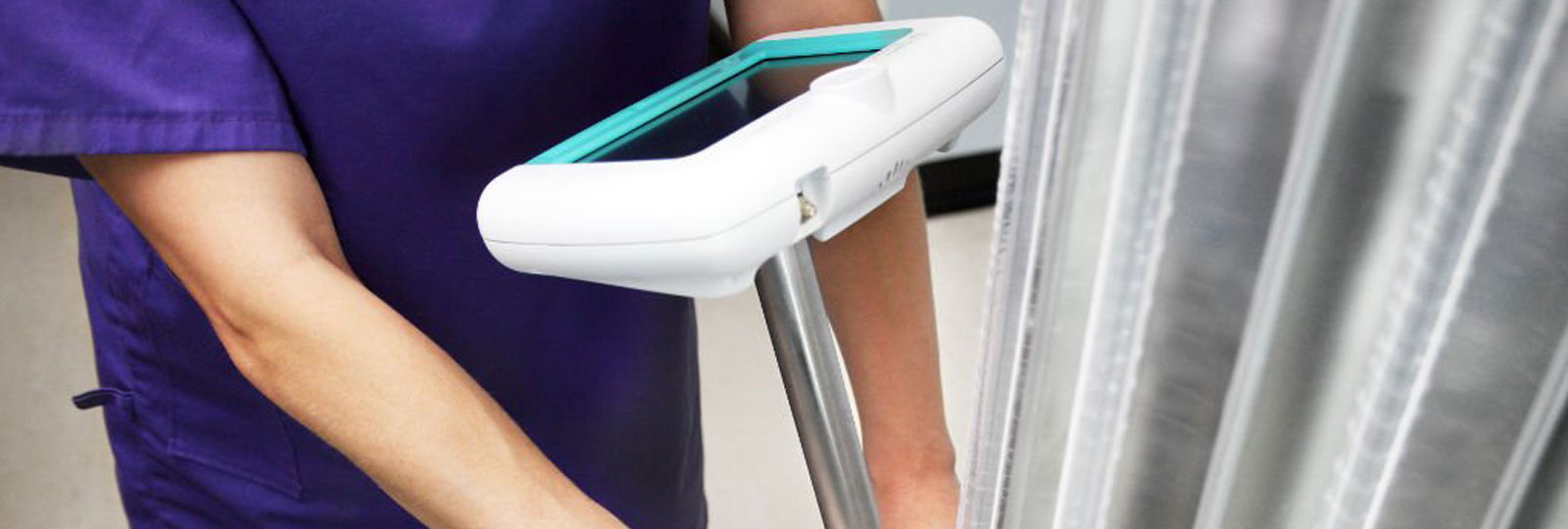
Specialist automated technologies for disinfection are rising in popularity as hospitals attempt to improve the effectiveness of their infection prevention and control (IP&C) practices.
Even when manual cleaning practices are followed meticulously, microbial contamination of surfaces can remain, which increases the risk of infections spreading. Using automated decontamination systems alongside regular cleaning ensures cleaning staff are providing a safe environment for patients, visitors and staff.
The spread of infection
There is growing evidence that contaminated surfaces are a key contributor to the spread of infection from person to person. Pathogens and multidrug resistant organisms can easily be shed from infected or colonised patients and have been known to survive on dry surfaces for hours, days or even months at a time.
Environmental decontamination, therefore, plays a crucial role in IP&C. The recent coronavirus outbreak is a clear example of the importance of environmental cleaning, as Covid-19 can survive on surfaces for up to nine days.
However, there is a growing awareness that manual cleaning practices alone aren’t enough to prevent the spread of infection in hospitals.
The problem with manual cleaning and disinfection
There are two potential problems with manual cleaning and disinfection practices:
- Cleaning solutions can become contaminated with the pathogen during the cleaning process, causing it to be spread to clean surfaces and creating a vicious cycle of contamination.
- Ineffective cleaning practices, e.g. failing to follow recommendations or disinfectant use, can allow the pathogens to continue surviving in the environment.
Studies show that just 50% of hospital ward surfaces are adequately decontaminated with the use of manual cleaning and disinfection. Even when cleaning staff take the utmost care to follow best practice, an element of risk still remains.
Automated decontamination systems for a safer patient environment
With evidence that suboptimal cleaning practices contribute to the spread of microorganisms, a growing number of hospitals are using automated decontamination systems that kill bacteria such as C.difficile and MRSA.
The stark reality is that one in 25 hospital patients will get an HAI. And this presents a huge challenge for hospital cleaning teams, as higher patient numbers can negatively impact cleaning efficiency and increased outbreaks require additional staff and cleaning supplies.
Using automated decontamination systems can reduce the risk of HAIs and keep the patient environment safe, whilst also ensuring rapid turnaround and minimal disruption.
These specialist automated technologies use either hydrogen peroxide vapour (HPV) or ultraviolet light (UV-C) and play a vital role in supporting the efficacy of manual cleaning practices.
Studies have shown that a combination of automated decontamination and monitored manual cleaning achieves best results in eliminating pathogens from the environment and significantly reducing the number of outbreaks.
Let’s take a closer look at how HPV and UV-C decontamination systems can effectively reduce HAIs.
HPV decontamination systems
Hydrogen peroxide (H202) is a chemical compound made up of two atoms; hydrogen and oxygen. It is a powerful disinfectant that is highly effective at killing micro-organisms by a process of oxidisation which destroys the cell wall. It has been used as a disinfectant since the 1920s.
Automated decontamination systems that use hydrogen peroxide vapour (HPV) to disinfect surfaces have been found to reduce the risk of patients acquiring infection whilst in hospital.
Research studies have shown that HPV is effective in achieving a log 6 (99.999%) reduction in infection rates. In one study at Leeds Teaching Hospital, the use of the HPV system Deprox™ significantly reduced C.difficile cases from 20 in 10 months to just 7 in the same period of time.
UV-C decontamination systems
UV-C is a short-wavelength light that destroys the nucleic acid inside micro-organisms and disrupts their DNA. It has been used as a form of sterilisation for over 100 years and is popular because it is both chemical-free and residue-free.
Regular usage of UV-C decontamination systems, such as Ultra-V™, has been proven to create a safer patient environment, to contribute to optimised bed flow and to improve the overall patient experience.
More hospitals are turning to automated decontamination systems to ensure effective IP&C practice. With growing rates of HAIs, these automated systems give cleaning staff the reassurance that they are delivering the best possible service for patients, visitors and staff.
If you’re considering introducing automated decontamination into your hospital or cleaning team, you might find this blog post weighing up the pros and cons of both HPV and UV-C useful.





